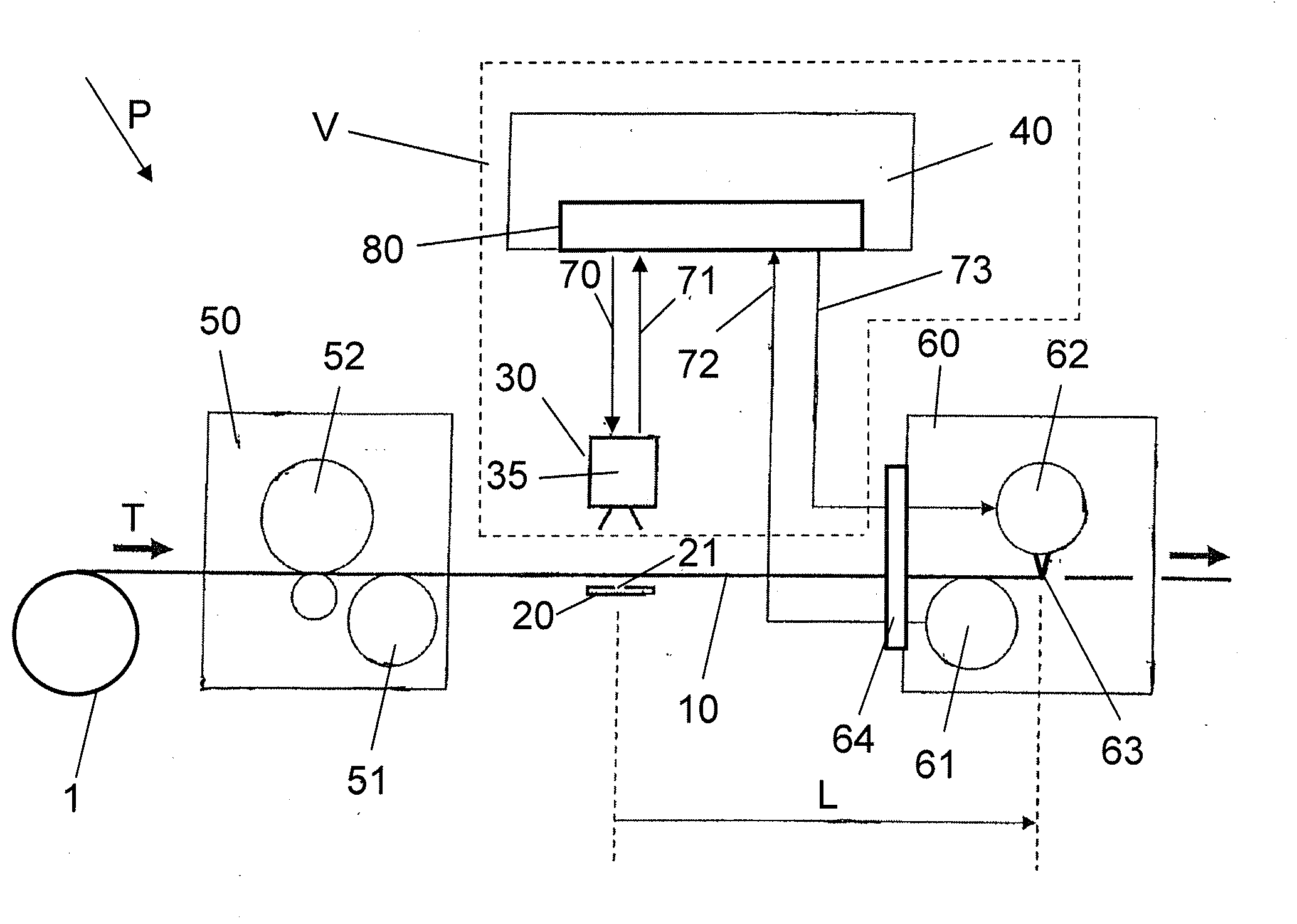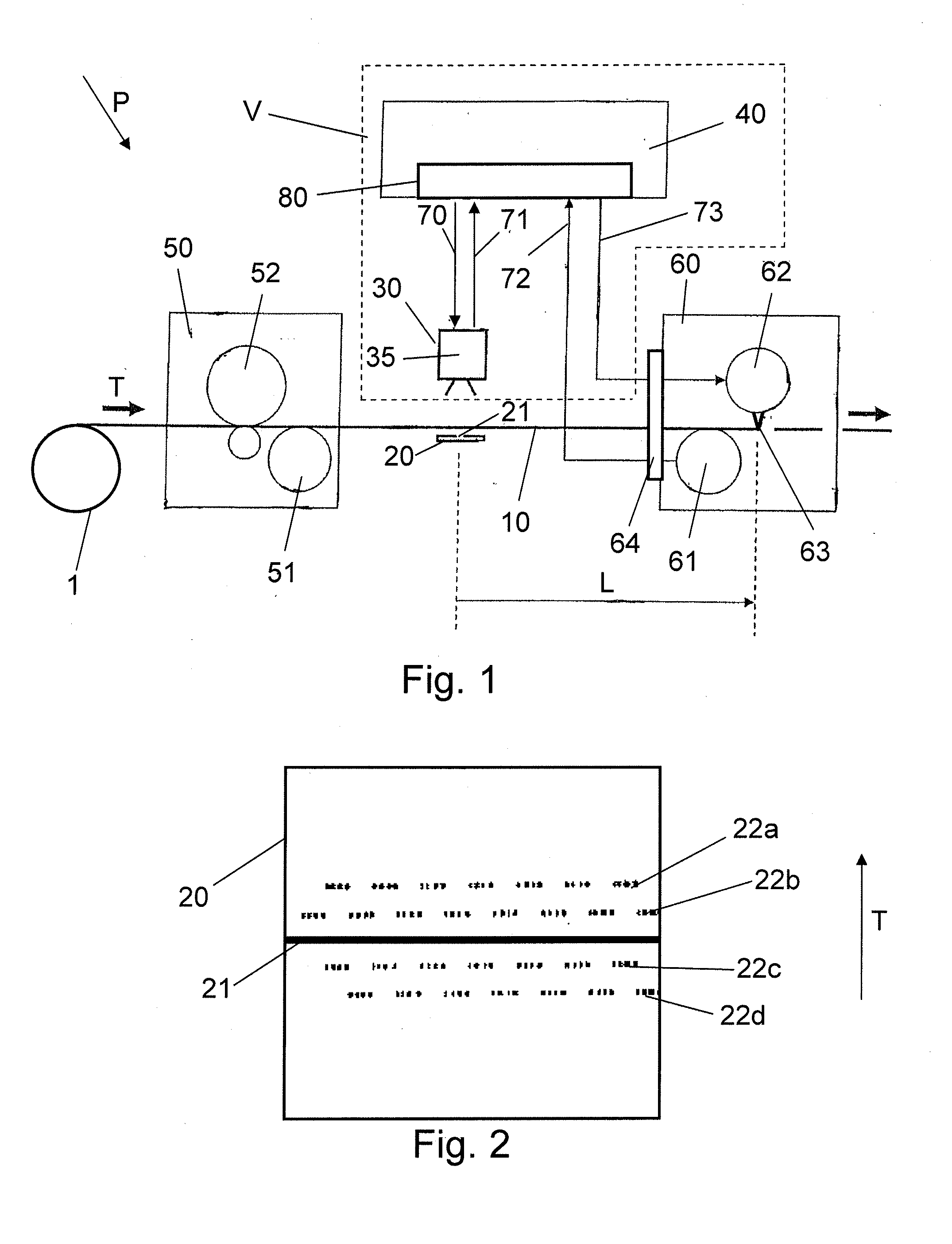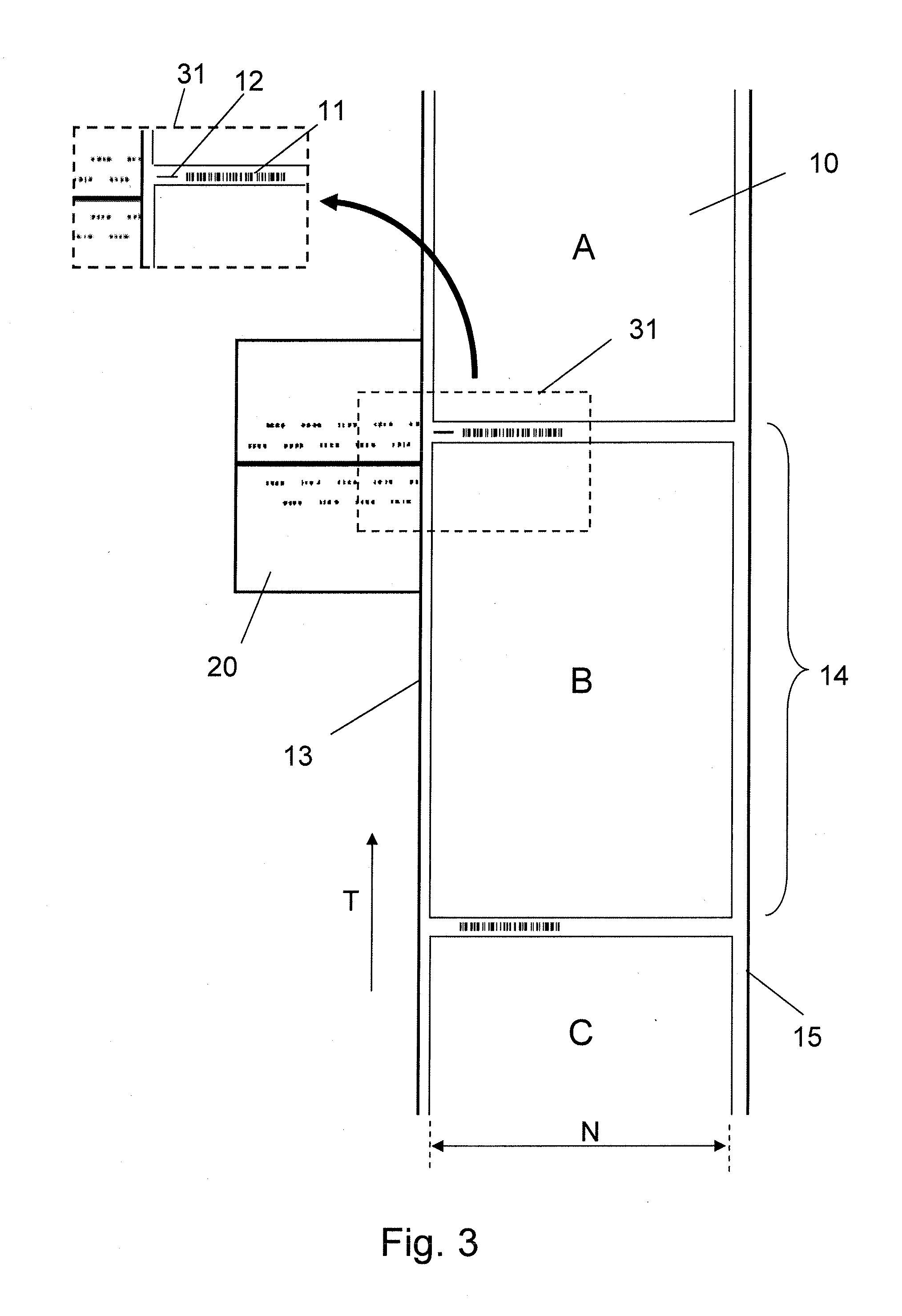Device and method for processing printing substrate web into printed products
a technology of printing substrate and printing product, which is applied in the direction of rotary presses, optics, instruments, etc., can solve the problems of synchronizing print units, increasing cutting or trimming expenditure, and increasing waste, so as to reduce production costs and expand the flexibility of the device
- Summary
- Abstract
- Description
- Claims
- Application Information
AI Technical Summary
Benefits of technology
Problems solved by technology
Method used
Image
Examples
Embodiment Construction
[0021]In the Figures, the same reference numbers denote components which operate the same way or have the same effect.
[0022]FIG. 1 shows a view from the side of a simplified further processing system P in which an exemplary embodiment of the device V is used. A web 10 comprising a printing substrate is unwound from a reel 1 and is supplied to a printing press 50. The printing press 50 comprises a print unit 52 and a drive 51, for example a first servo unit, for transporting the web 10 in a direction T. The drive 51 essentially determines the speed of the printing substrate which consists of paper for the embodiment described herein. Of course, other printing substrates such as foils, for example, can also be used for web 10.
[0023]The printed web 10 which arrives from the printing press 50 is cut into individual printed sheets in a further processing device 60, embodied as a cross cutter. This cross cutter is used only as an example for a further processing device 60, wherein this ca...
PUM
 Login to View More
Login to View More Abstract
Description
Claims
Application Information
 Login to View More
Login to View More - R&D
- Intellectual Property
- Life Sciences
- Materials
- Tech Scout
- Unparalleled Data Quality
- Higher Quality Content
- 60% Fewer Hallucinations
Browse by: Latest US Patents, China's latest patents, Technical Efficacy Thesaurus, Application Domain, Technology Topic, Popular Technical Reports.
© 2025 PatSnap. All rights reserved.Legal|Privacy policy|Modern Slavery Act Transparency Statement|Sitemap|About US| Contact US: help@patsnap.com



